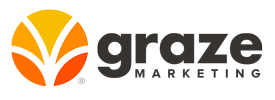In the ever-evolving landscape of digital advertising, Google Ads remains a key channel for businesses aiming to reach their target audiences and drive conversions. After managing $1,000,000 in Google Ads spending on behalf of our clients, we’ve gained invaluable insights that have reshaped our approach to online advertising. In this blog post, we’ll share our key takeaways and lessons learned from our extensive experience with Google Ads campaigns.
Google Ads performance projections aren’t to be trusted.
While keyword cost-per-click (CPC) estimates and performance projections can provide a rough estimate of campaign costs and outcomes, they often fall short of accurately predicting real-world results. Until ads are launched in the target market with desired keywords and audience targeting, these projections lack reliability. The true performance of campaigns is best assessed once they’re live and actively running. While you might want to get projections to help ease your mind on expected performance, whatever your PPC agency sends you isn’t necessarily what you should expect.
There isn’t a formula but effective campaign setup is critical.
Despite best practices and industry standards, there’s no one-size-fits-all formula for Google Ads success. Ad performance can vary significantly across different markets, industries, and target audiences. While many marketers have experience and understanding of tactics that work, they don’t always work. There is no guarantee of results, however, we have found that effective, highly detailed campaign setup and management are crucial to a good campaign launch. The real success comes in the ongoing optimization and enhancement of the campaigns.
Don’t stop your campaigns within the first 2-4 weeks of launching.
Yes, we have launched campaigns that start generating leads within days of launching, but this is not the norm, especially when working with automated bid strategies. Our rule of thumb is that our campaigns need roughly three weeks until they have generated enough data to make decisions on. In some cases it can take longer than that, especially with very limited budgets. So all in all, don’t get hung up on the results within the first month, and allocate at least three months to the strategy in order to learn.
Your ad spend earns more than just leads/traffic.
The more you spend on your ads, the more data you have to review, and the more data Google has to work with to help with automated bid strategies and audience identification. We have found many keyword tactics and strategies from the data gathered in Google Ad campaigns. We then can take those learnings and incorporate them into our SEO tactics and strategies. Your Google Ads just aren’t about lead gen, but offer you a glimpse into an extremely valuable data set – consumer intent.
Great results today don’t guarantee great results tomorrow.
With Google Advertising and PPC advertising in general results can fluctuate due to various factors, including increasing competition, shifts in consumer search behavior, and changes to Google Ad auctions. Keep in mind that Google is often testing formatting on search engine result pages (SERPs) on a regular basis. What works well one month may not yield the same results the next. It’s essential to adapt strategies and tactics in response to changing market conditions and performance trends.
The auction is increasingly competitive.
Google Ads operates on an auction-based system where advertisers compete for ad placement in search results. With the platform’s growing popularity and increasing competition, securing top positions in search results has become more expensive. As more advertisers bid for ad placements, the cost-per-click rises, making it harder for smaller businesses to compete effectively.
Feed the Google Ads platform with data and information.
Google Ads automated bidding tactics thrives on a variety of signals, some of these signals come from the details provided within the campaign itself. The more information provided to the platform, from campaign assets and ad extensions to budgets and targeting parameters, the better equipped the campaign is to deliver results. Investing in comprehensive campaign setup and optimization empowers Google Ads to target desired audiences and drive conversions effectively.
Google’s automated bid strategies work (much of the time).
Google’s automated bid strategies, such as Target CPA (Cost Per Acquisition) and Maximize Conversions, leverage machine learning algorithms to optimize bidding for campaign goals. While these strategies can be highly effective in many cases, they may not always deliver optimal results, especially for advertisers with low search volumes or limited budgets.
Google Ads can work with small budgets but work better with large budgets.
While larger budgets provide more data and flexibility for campaign optimization, Google Ads can still deliver results with smaller budgets. Strategic budget allocation, appropriate bid strategies, precise targeting, and efficient campaign management are key to maximizing the impact of limited ad spend. With careful planning and execution, even modest budgets can yield positive returns.
The biggest error with campaigns is conversion tracking.
Effective conversion tracking is crucial for measuring the success of Google Ads campaigns. However, many advertisers encounter issues with broken or inaccurate conversion tracking setups. Common issues include changes to website forms or structure without updating tracking tags, as well as incorrect setup of tracking tools like Google Tag Manager and Google Analytics.
The importance of websites and landing pages is often overlooked.
We often onboard Google Ads accounts with websites that are either dated, slow, and/or not optimized for conversions. Many advertisers are focused primarily on the keywords and audiences they want to target, neglecting the tool that turns a click into a lead – the landing page. Second only to conversion tracking issues, poor-performing websites, and landing pages are another area of campaigns that are often overlooked or simply not built to speak directly to the target audience.
Local Google Ads need Google Business Profiles with many 5-star reviews.
For businesses targeting local audiences, leveraging Google Business Profiles and accumulating positive reviews is essential for maximizing the effectiveness of local Google Ads campaigns. A strong online presence and positive reputation help build trust with local consumers and drive quality leads and conversions.
Typically calls directly from Google Ads are better quality than website click-to-calls.
In our experience, calls directly initiated from Google Ads tend to result in higher-quality leads compared to clicks on telephone links displayed on websites. By optimizing ad campaigns to encourage direct calls from call extensions, businesses can attract engaged prospects who are more likely to convert into customers.
Key Takeaways
While Google Advertising remains a valuable marketing channel, especially for new businesses, there are many nuances to managing campaigns effectively. If you plan to DIY when it comes to your Google Ads there is a lot of you are likely to learn along the way. In addition, Google Advertising success depends upon the use of other tactics and tools such as SEO, Google Business Profiles, Google Analytics, Search Console, and more. These tools integrate with Google Ads and help to improve results over time. At the very least, hopefully, these insights help you better understand how to work with Google Ads for better growth and lead generation.

